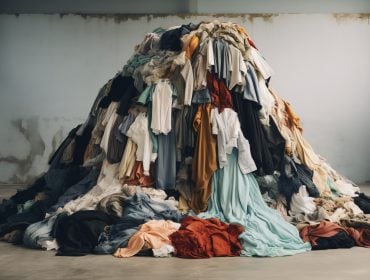Exploring the Link: Are Staph Infections an STD?
You may wonder if a staph infection could be an STD. The truth lies in understanding how it spreads and who’s at risk. For example, cellulitis, a skin-invading staph ailment, hits deep layers but antibiotics can usually treat it well.
Now consider MRSA – tough to fight because this bug laughs at common drugs we use against others like it; here, clean hands matter much more than sexual activity for spreading germs around. If your partner has it though, staying clean helps you stay clear too, skin contact poses risks just as shared toilets might do so caution counts!
Understanding Staph Infections
Staph infections start with bacteria. These tiny bugs live on skin and surfaces, ready to sneak in through a cut or scrape. You touch something, maybe where someone else did too, like a towel at the gym, and later you find redness or swelling where your skin got hurt.
It’s cellulitis, an infection under the top layer of your skin that needs antibiotics. It gets scary when this bug won’t quit even after strong medicine, that’s MRSA, tough enough to fight off regular treatments and it can make you really sick. This is more common if you often take antibiotics; they don’t work like before because these staph germs have learned how to win against them.
MRSA matters for everyone but hits harder if you’re already not feeling strong due to other sicknesses or health problems, if diabetes lives with you or your immune system isn’t up for a good fight. Think about what touches your hands every day, it could pass staph around, you get close with others who might carry these germs without knowing it, or from things only looked dirty but were dangerous as well. So wash those hands!
Keep wounds clean too so bad bugs stay out, a simple step yet powerful against spreading infection whether at home thinking “my husband has one,” wondering “is this STD?” No, a staph infection is not an STD but it can easily be passed between people who are often in close proximity to each other this is why being smart about hygiene matters so much when dealing with this kind of bacterial infection and bacterial STDs.
Transmission of Staphylococcus Bacteria
You should know, if your partner has a staph infection, there’s a chance you could get it too. Staphylococcus bacteria spreads through contact. It loves to move from one person’s hands to another’s skin when touched just right, like after an injury or even on healthy-looking skin that might have tiny breaks invisible to the naked eye.
Redness and swelling at the infected spot; sometimes with pus-filled abscesses that hurt and feel warm if you touch them. Remember this: serious trouble like pneumonia can start here but is rare. If cuts happen, or for no clear reason, an area of your body gets red or swollen fast, talk with doctors quick.
People carry these bacteria without knowing all their life, it sits silent until something kicks off illness days or years later. Ordinary soap-and-water handwashing helps stop its spread early so simple infections don’t turn into big health issues needing hospital stays!
Staph vs. STDs: Clarifying Differences
Staph infections, like those by Staphylococcus aureus, often affect the skin or invade through wounds. They’re not usually STDs; that is, they don’t spread primarily through sexual contact. Your husband can have a staph infection without it being an intimate risk to you.
Such bacteria live on the skin and only sometimes cause trouble. Yet, share towels with care since these germs spread easily this way too, no need for panic but do practice good hygiene. Remember: Keeping hands clean stops most staph from moving around in your home.
Can You Catch Staph from Your Partner?
You can catch staph, like MRSA, from close contact with someone who has it. Say your partner has a staph infection. You might get it too if you share towels or bed sheets that aren’t clean.
Remember to wash your hands, clothing, and sheets/towels often; this simple act helps stop germs from spreading in your home. Staph bacteria don’t just sit on surfaces; they can move around through items we all touch daily. Pets carry these bugs too but usually get them from us – not the other way around.
Debunking the Toilet Seat Contagion Myth
You worry your husband’s staph infection might spread to you. Good hygiene, like handwashing, is key for staying healthy and avoiding germs; in fact, it’s essential after using the restroom. The idea that diseases like chlamydia or gonorrhea come from toilet seats isn’t true.
Harmful bugs can’t live long on surfaces; transmission would need direct contact with your skin which rarely happens. Experts say an STD from a seat? Highly unlikely unless there was sexual activity involved this doesn’t support common fears of ‘toilet contagions’.
Safe Practices to Prevent Infection Spread
Wash hands often, for 20 seconds each time. Use soap and water to kill germs that can lead to infection. Don’t touch your face – eyes, nose or mouth – with unwashed hands; these are easy ways for viruses to enter the body.
Keep wounds clean and covered until they heal completely, preventing bacteria from entering cuts or scrapes. Lastly, keep things you use a lot like phones super clean – wipe them down regularly since they come into contact with many surfaces throughout the day which might carry harmful microbes.
Separating Fact from Fiction in Transmission
Staph infections in the community can confuse many. They’re not a form of STD, but they spread with close contact or through common items. Imagine your husband has it; you might worry if you will get sick too.
In homes, these staphylococci linger as either colonizers or environmental contaminants which makes re-infection likely and control tough. Household members can pass them around by simple touch or using the same things like towels. Schools and other places where individuals gather also play their part in spreading it further, even without sex being involved at all.
Cutting down on household-based cases needs looking deeply into how people interact within their houses – touching stuff after others or caring for someone who’s unwell – because that’s often where germs take hold and keep causing trouble.
Why staph infections don’t spread mainly through sexual contact, but close skin-to-skin touch can pass them on. Be cautious since intimate activities often involve such closeness, making awareness vital for prevention.
Remember, maintaining good hygiene and getting regular check-ups play a key role in safeguarding your health against various infections including those caused by staph bacteria. Stay informed with STDCheck about all aspects of sexual health to ensure peace of mind during your most private moments.
Medically Reviewed by J. Frank Martin JR., MD on April 23, 2024
Secure and Confidential
STD testing services
The fastest results possbile - available in 1 to 2 days

Tagged
Categorized As
Author: STD Check Editorial Team
At STDCheck.com, we go to great lengths to ensure quality content. We’re using our own collection of data. It is not bought or made up for “click-bait” purposes. We don’t entice traffic with cheesy graphics or raunchy headlines. Our information is to promote STD testing, educate people, let go of social stigmas, and bring awareness. We also provide a completely confidential atmosphere through private testing. When we produce an article, it is fact-based. We check it with medical advisors that approve it. Our staff consists of doctors and other medical professionals who peer review the content we make available on STDCheck.com. From all over the world, we have sourced the best and the brightest content developers, including medical professionals, marketing engineers, data scientists, content specialists, and media relations.




